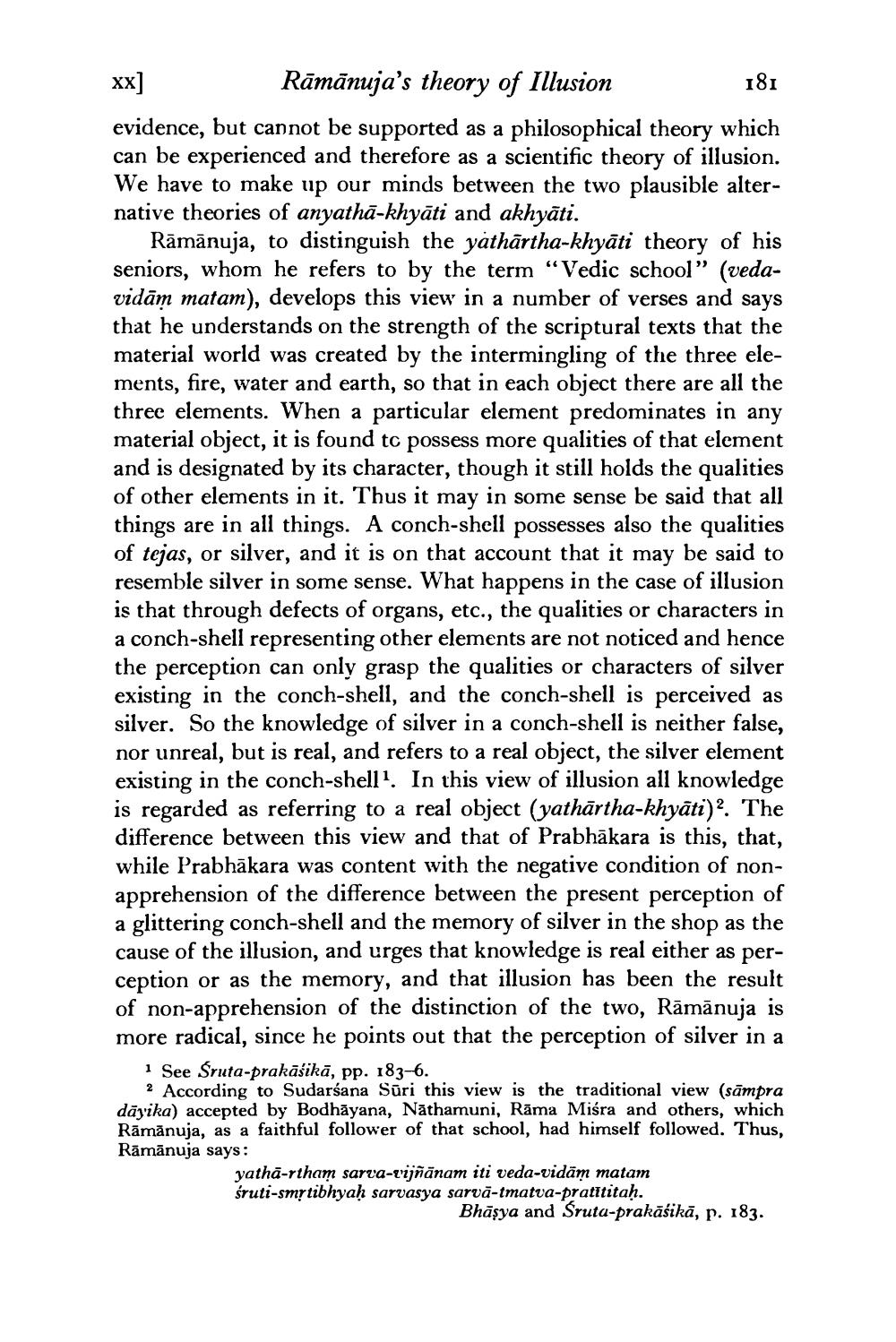________________
xx] Rāmānuja's theory of Illusion
181 evidence, but cannot be supported as a philosophical theory which can be experienced and therefore as a scientific theory of illusion. We have to make up our minds between the two plausible alternative theories of anyathā-khyāti and akhyāti.
Rāmānuja, to distinguish the yathārtha-khyāti theory of his seniors, whom he refers to by the term "Vedic school” (vedavidām matam), develops this view in a number of verses and says that he understands on the strength of the scriptural texts that the material world was created by the intermingling of the three elements, fire, water and earth, so that in each object there are all the three elements. When a particular element predominates in any material object, it is found to possess more qualities of that element and is designated by its character, though it still holds the qualities of other elements in it. Thus it may in some sense be said that all things are in all things. A conch-shell possesses also the qualities of tejas, or silver, and it is on that account that it may be said to resemble silver in some sense. What happens in the case of illusion is that through defects of organs, etc., the qualities or characters in a conch-shell representing other elements are not noticed and hence the perception can only grasp the qualities or characters of silver existing in the conch-shell, and the conch-shell is perceived as silver. So the knowledge of silver in a conch-shell is neither false, nor unreal, but is real, and refers to a real object, the silver element existing in the conch-shell?. In this view of illusion all knowledge is regarded as referring to a real object (yathārtha-khyāti)? The difference between this view and that of Prabhākara is this, that, while Prabhākara was content with the negative condition of nonapprehension of the difference between the present perception of a glittering conch-shell and the memory of silver in the shop as the cause of the illusion, and urges that knowledge is real either as perception or as the memory, and that illusion has been the result of non-apprehension of the distinction of the two, Rāmānuja is more radical, since he points out that the perception of silver in a
1 See Śruta-prakāśikā, pp. 183-6.
2 According to Sudarśana Sūri this view is the traditional view (sāmpra dāyika) accepted by Bodhāyana, Nāthamuni, Rāma Miśra and others, which Rāmānuja, as a faithful follower of that school, had himself followed. Thus, Rāmānuja says:
yathā-rtham sarva-rijñānam iti veda-vidām matam śruti-smrtibhyaḥ sarvasya sarvā-tmatva-pratititah.
Bhāşya and Sruta-prakāśikā, p. 183.




